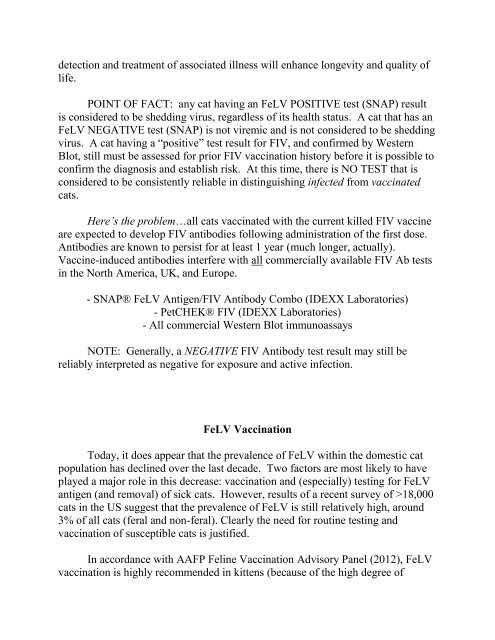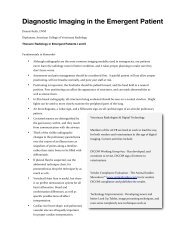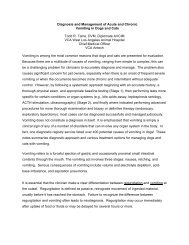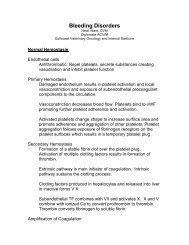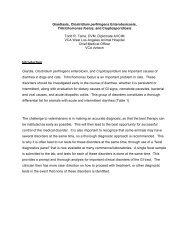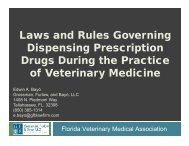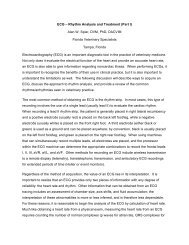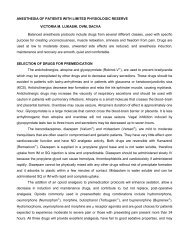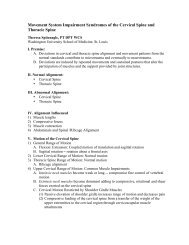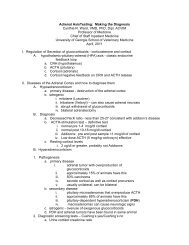Feline Leukemia Virus and Feline Immunodeficiency Virus ...
Feline Leukemia Virus and Feline Immunodeficiency Virus ...
Feline Leukemia Virus and Feline Immunodeficiency Virus ...
- No tags were found...
You also want an ePaper? Increase the reach of your titles
YUMPU automatically turns print PDFs into web optimized ePapers that Google loves.
detection <strong>and</strong> treatment of associated illness will enhance longevity <strong>and</strong> quality oflife.POINT OF FACT: any cat having an FeLV POSITIVE test (SNAP) resultis considered to be shedding virus, regardless of its health status. A cat that has anFeLV NEGATIVE test (SNAP) is not viremic <strong>and</strong> is not considered to be sheddingvirus. A cat having a “positive” test result for FIV, <strong>and</strong> confirmed by WesternBlot, still must be assessed for prior FIV vaccination history before it is possible toconfirm the diagnosis <strong>and</strong> establish risk. At this time, there is NO TEST that isconsidered to be consistently reliable in distinguishing infected from vaccinatedcats.Here’s the problem…all cats vaccinated with the current killed FIV vaccineare expected to develop FIV antibodies following administration of the first dose.Antibodies are known to persist for at least 1 year (much longer, actually).Vaccine-induced antibodies interfere with all commercially available FIV Ab testsin the North America, UK, <strong>and</strong> Europe.- SNAP® FeLV Antigen/FIV Antibody Combo (IDEXX Laboratories)- PetCHEK® FIV (IDEXX Laboratories)- All commercial Western Blot immunoassaysNOTE: Generally, a NEGATIVE FIV Antibody test result may still bereliably interpreted as negative for exposure <strong>and</strong> active infection.FeLV VaccinationToday, it does appear that the prevalence of FeLV within the domestic catpopulation has declined over the last decade. Two factors are most likely to haveplayed a major role in this decrease: vaccination <strong>and</strong> (especially) testing for FeLVantigen (<strong>and</strong> removal) of sick cats. However, results of a recent survey of >18,000cats in the US suggest that the prevalence of FeLV is still relatively high, around3% of all cats (feral <strong>and</strong> non-feral). Clearly the need for routine testing <strong>and</strong>vaccination of susceptible cats is justified.In accordance with AAFP <strong>Feline</strong> Vaccination Advisory Panel (2012), FeLVvaccination is highly recommended in kittens (because of the high degree of


